William Whitehead Watts, 1860 - 1947
by Brian Stevenson
last updated October, 2020
W.W. Watts was a professional geologist, working in both academia and for the U.K. Geological Survey. His microscope slides of thin-sectioned minerals are occasionally seen in collections, and may have stemmed from his scientific research. Figure 1 illustrates two that may date to his 1885 publication on minerals of the Breidden Hills of Wales. Brian Bracegirdle’s Microscopical Mounts and Mounters illustrates a mineral preparation from Santorini.
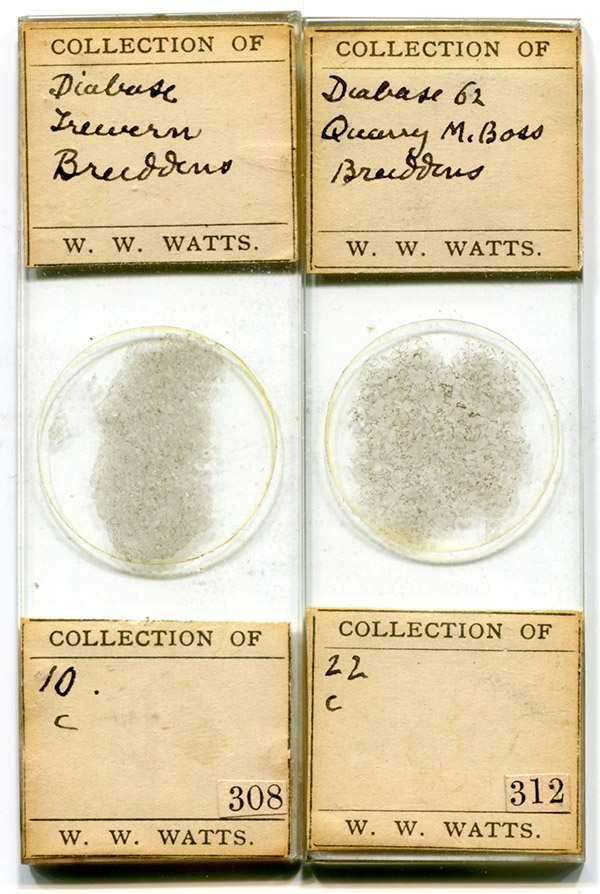
Figure 1.
Two slides from the “collection of W.W. Watts”. Regarding these two slides, of diabase from different sources in the volcanic Breidden Hills, Watts published “On the igneous and associated rocks of the Breidden Hills in East Montgomeryshire and West Shropshire” in 1885. His colleague P.G.H. Boswell wrote, “(Watts) investigated under the microscope the igneous and associated fragmental rocks to which the Breiddens owe their striking form - the lavas, the volcanic ashes and the intrusive ‘diabase’ rocks; and he demonstrated convincingly their relationships to each other and the sediments”.
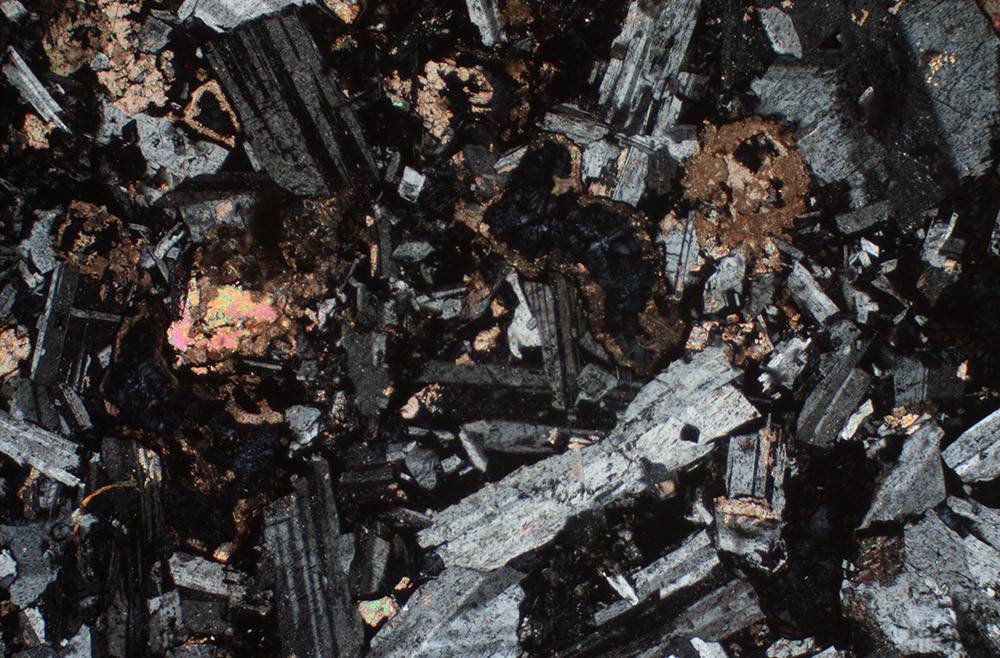
Figure 2.
Diabase from a quarry in the Breidden Hills, by W.W. Watts (see Figure 1, right slide, number 312). Photographed with a 3.5x objective lens, a C-mounted digital SLR camera, and crossed polarizing filters.
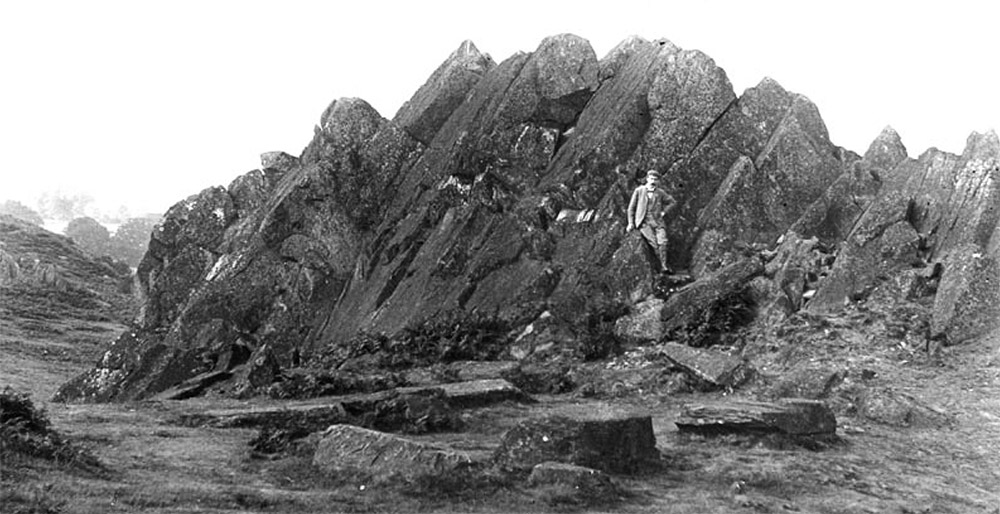
Figure 3.
W.W. Watts in the field, Charnwood. Adapted for nonprofit, educational purposes from H. Boynton and T. Ford, “Mercian Geologist”, 2010.
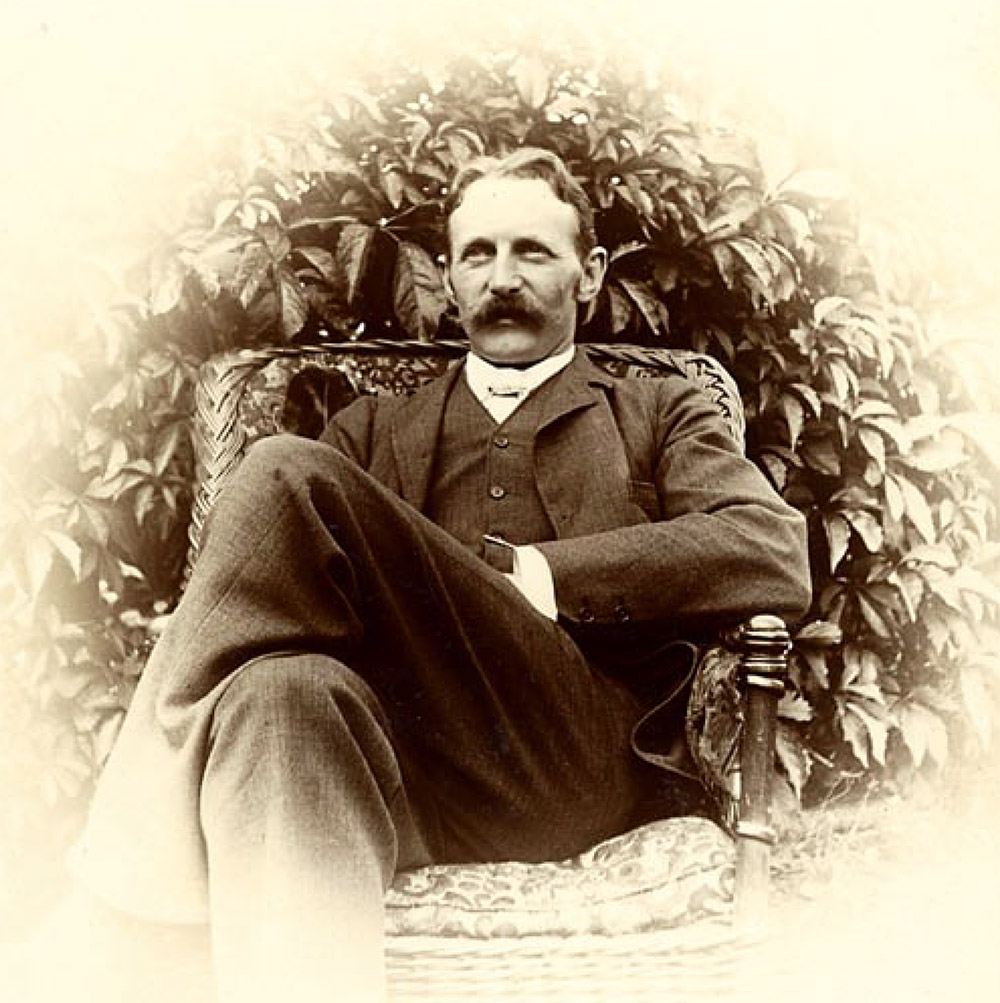
Figure 4.
William W. Watts, adapted for nonprofit, educational purposes from H. Boynton and T. Ford, “Mercian Geologist”, 2010.
William Whitehead Watts was born on June 7, 1860, in Broseley, Shropshire. His father, Isaac, was a music teacher. After primary education at local schools, Watts attended Denstone College, Shropshire, then graduated in 1881 from Sidney Sussex College, Cambridge University.
He then entered the Civil Service as a member of the Geological Survey. Watt’s 1885 publication on the Breidden Hills was his first original research paper. He also worked as a University Extension lecturer, presenting at some three dozen towns over the next several years.
Watts was an active member of the British Association for the Advancement of Science, joining in 1883. He was elected President in 1934.
William Watts married Louisa Atchison in 1889. A daughter was born in 1890, but Louisa died the following year. He remarried in 1894, to Louisa’s sister-in-law, Rachel Atchison, whose husband had died in 1891. William and Rachel had one child together, a daughter.
In 1891, Watts was appointed Petrographer of the Geological Survey in Ireland. Two years later, he took the same position at the national headquarters in London.
The Geological Society awarded Watts with the Wollaston Fund in 1895, the Murchison Medal in 1915, and its highest honor, the Wollaston Medal, in 1927.
In 1897, Watts took a position as Assistant Professor under Charles Lapworth at the University of Birmingham. He received a Master of Science degree from Birmingham in 1902. From 1904 to 1906, Watts served as Honorary Professor of Geography.
His important introductory book, Geology for Beginners, was first published in 1898. A second edition was published in 1903.
Watts was elected to membership in the Royal Society in 1904. He served as a Councilor for the Society from 1913-1914, 1917-1919, and 1929-1931.
He earned his Sc.D. degree from Cambridge in 1908.
Watts moved to the Royal College of Science and Royal School of Mines in 1906, as Professor of Geology. He retained that position when the two institutions merged in 1910 to become the Imperial College of Science and Technology. Watts was also Dean of the Faculty of Science from 1908 until 1923. In 1929, after closer connections were formed with the University of London, Watts was also appointed Professor of that institution.
Upon his retirement, the Geological Department of the Imperial College founded the Watts Medal, to be awarded to the best graduate student.
William W. Watts died on July 30, 1947
A colleague from the Geologists’ Association included a story of Watts’ scientific determination in his 1947 obituary. Regarding a private estate in the Midlands whose owner had repeatedly refused access to geologists, “The estate had east and west entrances, and early one morning (about the year 1900), Watts determined to make his observations. Entering unnoticed by the west gate and taking a secluded footpath, he made direct for the opposite exit. Having almost reached the centre of the estate he espied, coming along a path at right angles to him, a keeper. Instantly turning round and facing the way he had come, he waited for the keeper, who informed him angrily that he was trespassing and must leave the grounds at once. Thereupon Watts expressed regret and remarked, ‘I suppose, then, I must go back?’ Turning round again with a cheery ‘Good day’ he continued his walk to the east gate and thus made a complete cross-traverse of the area”.
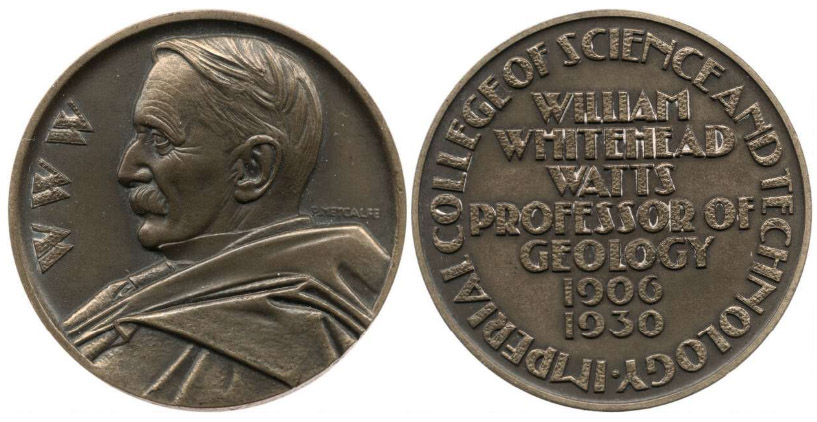
Figure 5.
The W.W. Watts Medal, awarded each year by the Department of Geology of the Imperial College of Science and Technology to the best graduate student. Adapted for nonprofit, educational purposes from https://www.britishmuseum.org/collection/object/C_2007-4183-31.
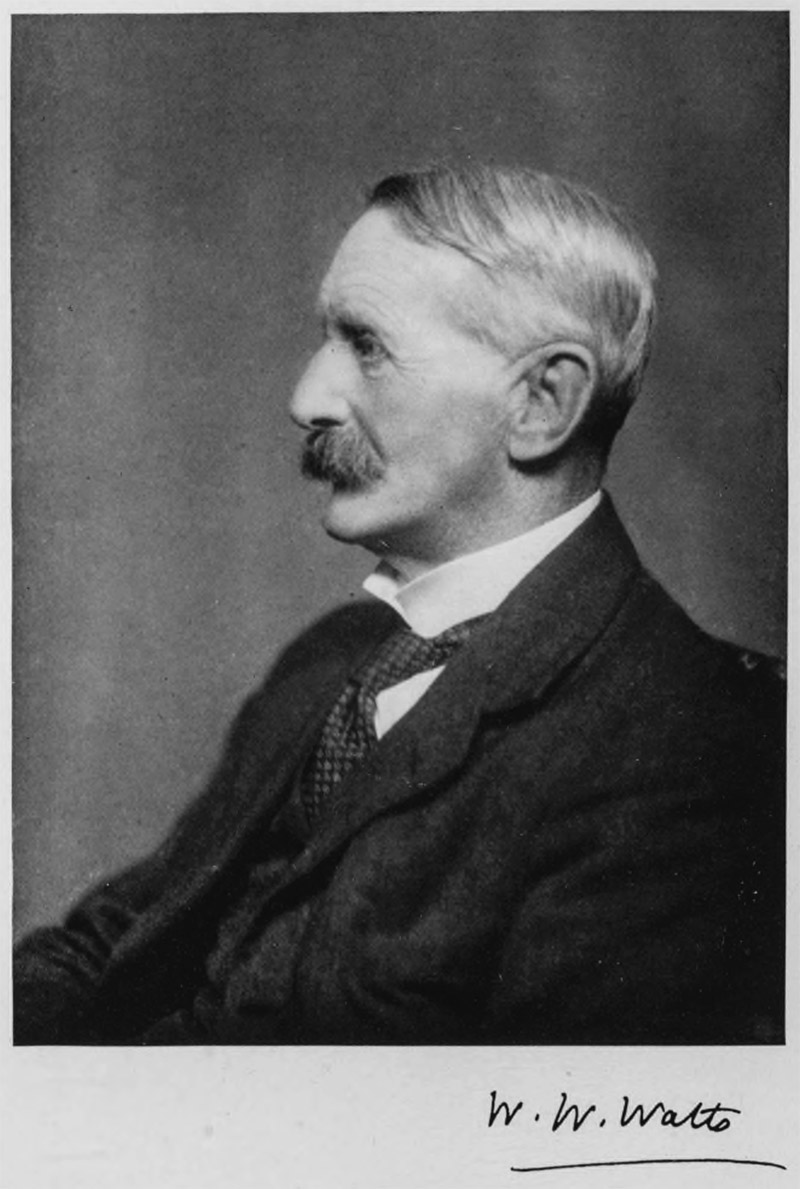
Figure 6.
William Whitehead Watts.
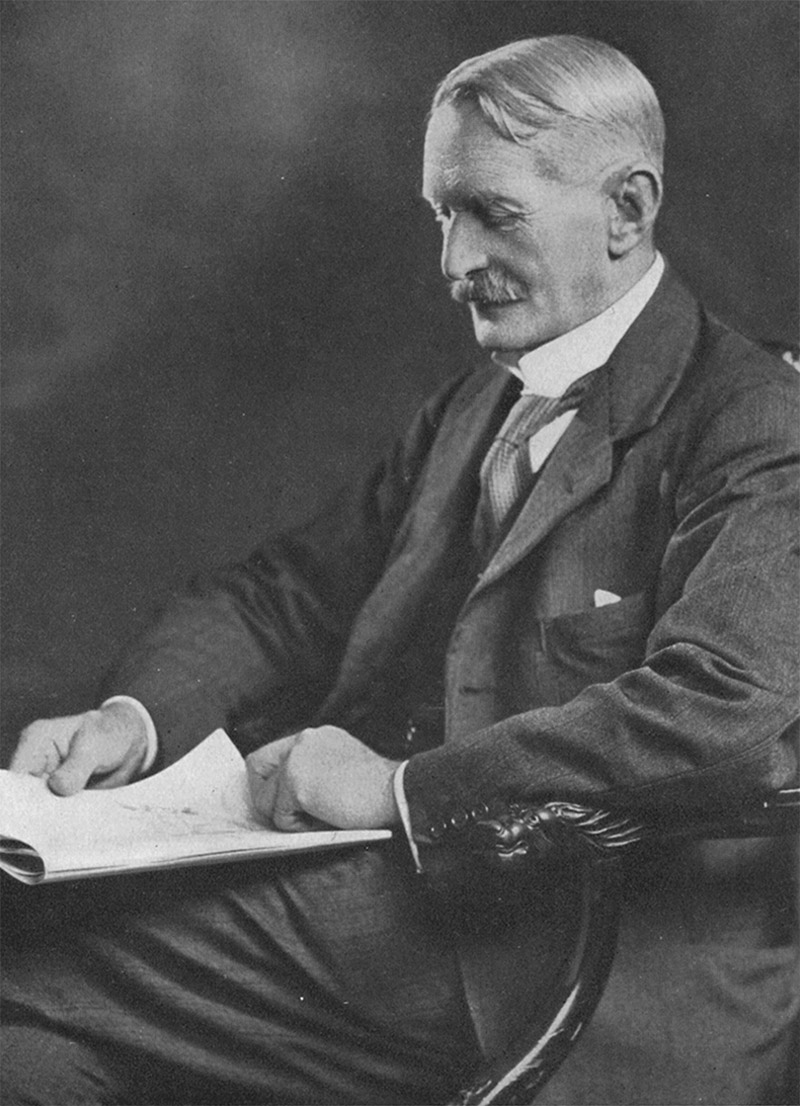
Figure 7.
William Whitehead Watts.
Resources
Bracegirdle, Brian (1998) Microscopical Mounts and Mounters, Quekett Microscopical Club, London, pages 100 and 182, Plate 39-B.
Boswell, Percy G.H. (1947) William Whitehead Watts, Obituary Notices of Fellows of the Royal Society, Vol. 6, pages 263-279
Boynton, Helen, and Trevor Ford (2010) William W. Watts, pioneer Midlands geologist, Mercian Geologist, Vol. 17, pages 195-202
Nature (1934) Prof W. W. Watts, F.R.S.: President-Elect of the British Association, nature, Vol. 134, page 410
Sweeting, G.S. (1947) Professor William Whitehead Watts, Proceedings of the Geologists’ Association, Vol. 59, pages 1-6
Watts, William W. (1885) On the igneous and associated rocks of the Breidden Hills in East Montgomeryshire and West Shropshire, Quarterly Journal of the Geological Society, Vol. 41, 532-546
Watts, William W. (1898) Geology for Beginners, Macmillan & Co., London
Watts, William W. (1903) Geology for Beginners, Second edition, Macmillan & Co., London






